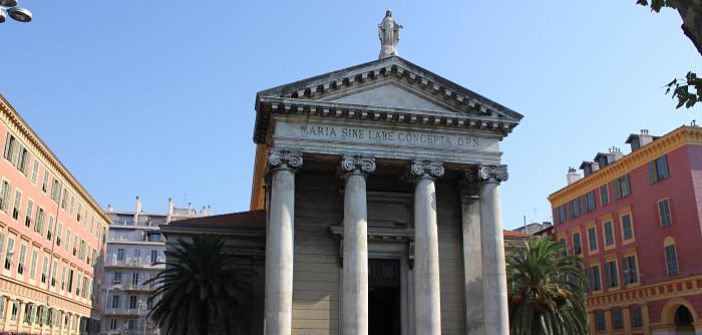In 1751, when Lunel opened the port of Nice, there was a small wooden chapel, that of the Lazaret and the maritime prisons. The inhabitants went to Saint Martin Saint Augustin.
On July 7, 1823, under the reign of Charles Felix, the port was established as a parish. The king of Piedmont-Sardinia requested a study for the construction of a building to serve this port neighborhood. The studies took a long time, and on January 6, 1840, Monsignor Galvano laid the first stone of the Church of Our Lady of the Port, also known as the Church of the Immaculate Conception.
This building, constructed according to the plans of Sasserno, was completed rather quickly. The work was finished in October 1841. Torrential rains on the 28th of that October reduced the construction to ruins, causing it to collapse barely completed, leaving only the sacristy and the main altar standing. Worship was held at 11 Fodéré Street, in warehouses. Construction resumed in 1847.
It was the architect Joseph Vernier, designer of all the buildings in the Île de Beauté square, who drew up the plans with better foundation stability. The building was delivered for worship six years later, in 1853, and was consecrated by Monsignor Galvano, the Bishop of Nice.
The inhabitants, led by the parish priest, departed from the forecourt of Our Lady of the Port to vote for the annexation of Nice to France in 1860. The bell tower would only be erected in 1880, and the pillars of the façade were added in 1896.
After the bombings of 1944, the ceiling of the nave collapsed, and the church remained without a ceiling until 1953. Our Lady of the Port has been classified as a historical monument since 1991, along with the entire Île de Beauté square.


